6 Hard Facts About NASA's Next Mars Rover
Meet Curiosity: Red Planet Rover
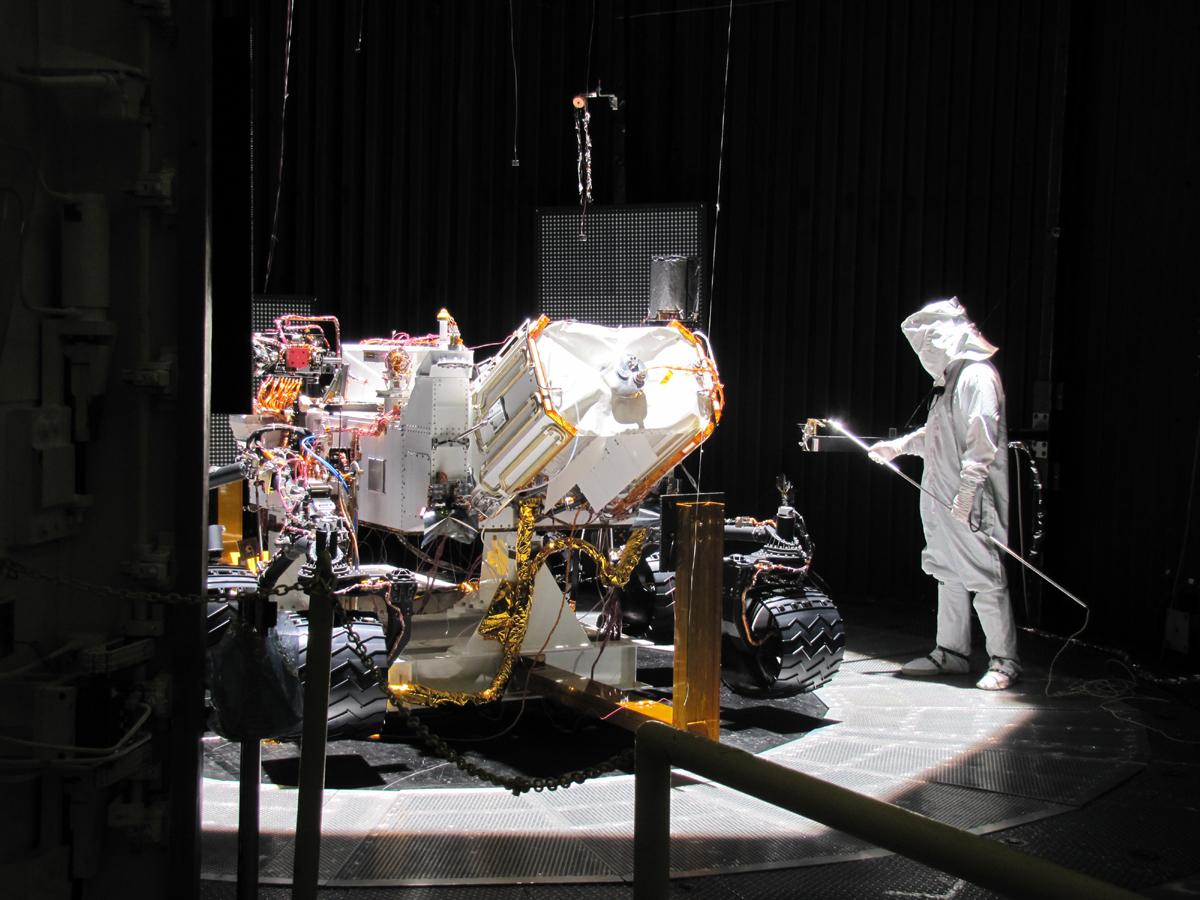
NASA's next Mars rover, the car-size Curiosity, is coming together piece by piece.
The Mars rover Curiosity, also known as the Mars Science Laboratory, will launch in late 2011 and land on the Red Planet in August 2012. Its main goal is to assess whether Mars ever had an environment capable of supporting microbial life, NASA officials have said.
Here are six basic facts from NASA about Curiosity and its $2.3 billion mission:
It's the Size of a Car
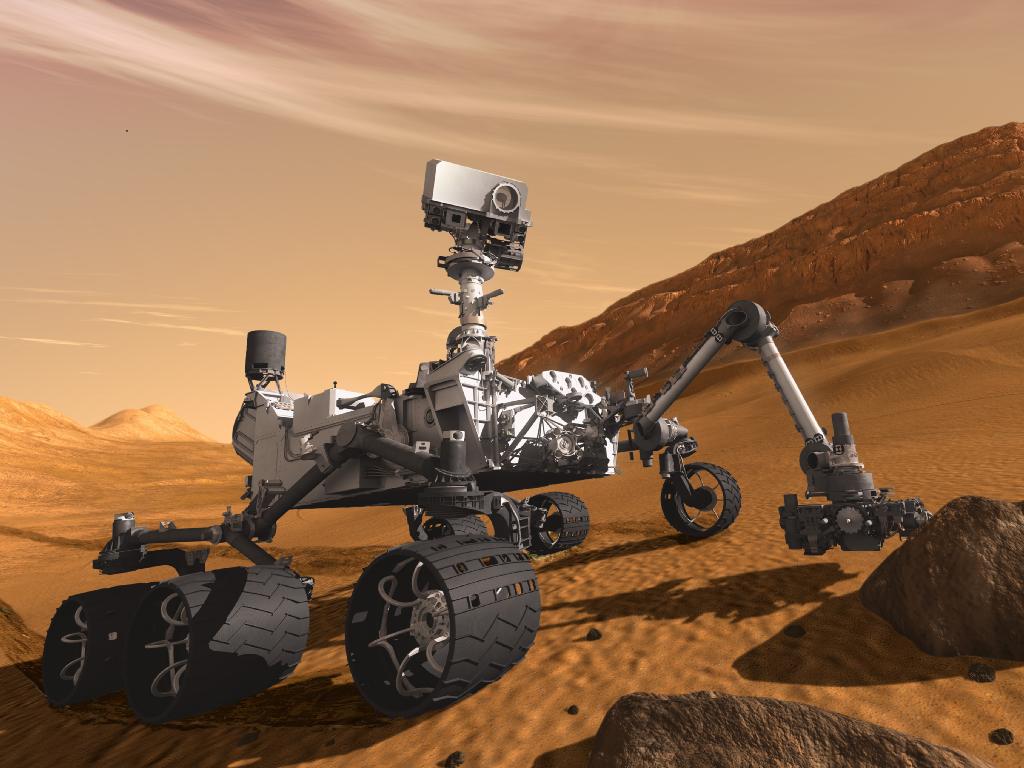
Curiosity is about the size of a Mini Cooper — much bigger than its golf-cart-sized rover predecessors, Spirit and Opportunity, and the smaller Pathfinder rover.
Curiosity is twice as long (about 9 feet, or 2.8 meters) and four times as heavy as Spirit and Opportunity, both of which landed in 2004. Pathfinder, which was about the size of a microwave oven, touched down on the surface of Mars in 1997.
Curiosity Has a Laser
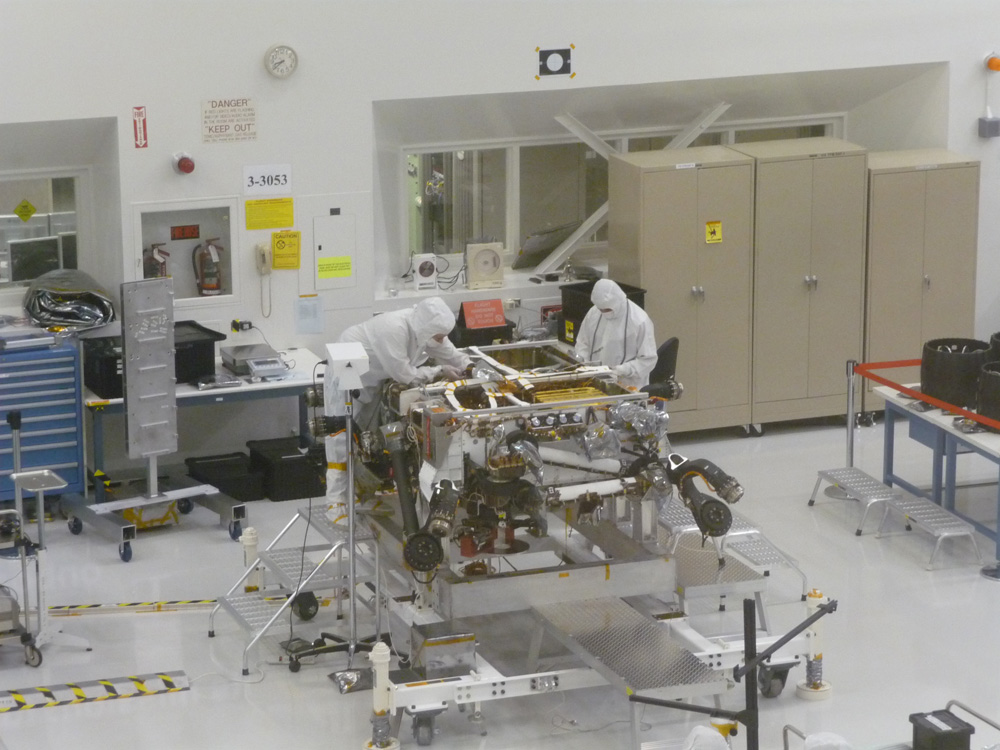
Curiosity will use 10 science instruments to examine rocks, soil and the atmosphere, including a laser to vaporize patches of rock. Another instrument will search the resulting dust cloud for carbon-based molecules, which are the building blocks of life as we know it.
Mast-mounted cameras will study objects from a distance, and gears mounted on Curiosity's robotic arm will allow the rover to get a closer look at any interesting targets. Finally, analytical instruments on the rover's body will be able to determine the composition of rock and soil samples acquired with its powdering drill and scoop.
No Airbags on This Rover

Since Curiosity is too heavy for the airbag-landing systems that were installed on previous Mars rovers, NASA has devised something completely different. The rover will use something similar to a sky crane heavy-lift helicopter to drop it down to the Martian surface.
After a parachute slows the rover's descent toward Mars, a rocket-powered backpack will hover above the surface and lower the rover on a tether during the final moments before landing. The Mars sky crane will fly a short distance away after lowering Curiosity to avoid hitting the rover when it finally crashes.
Landing Zone Not Final
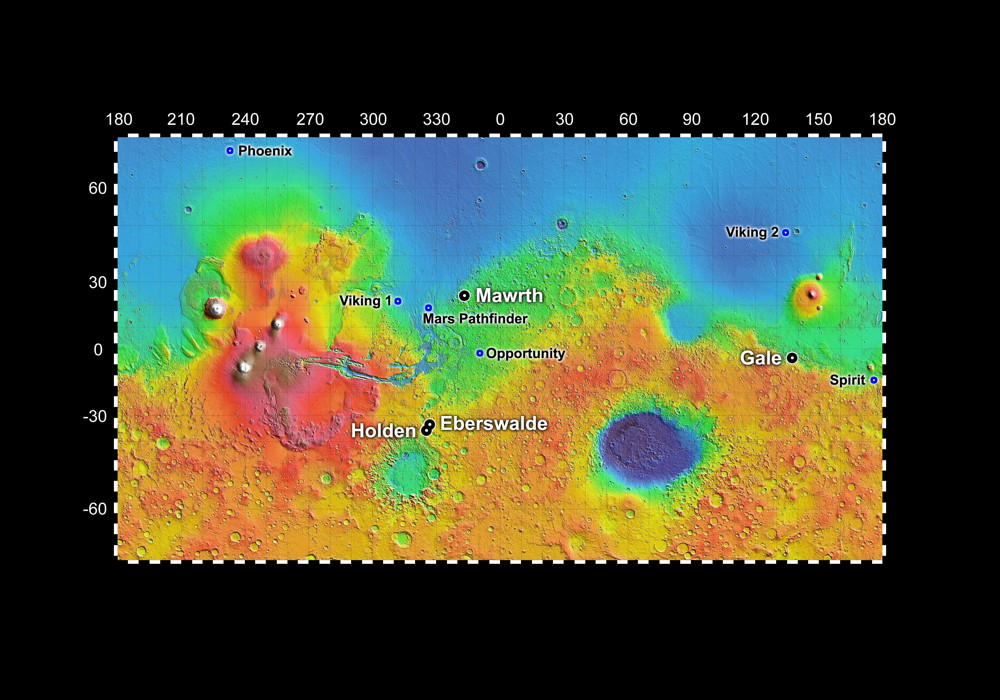
In November 2008, NASA narrowed the choices for Curiosity's Mars touchdown landing sitepoint to four finalists. Each of the candidates is linked to the planet's ancient wet conditions, making it an attractive Martian stop.
The agency will pick one that it believes could preserve a geological record of an environment favorable for life.
The final landing site must also meet safe-landing criteria, which brings us to Curiosity's landing method.
Rover Has 6-Wheel Drive
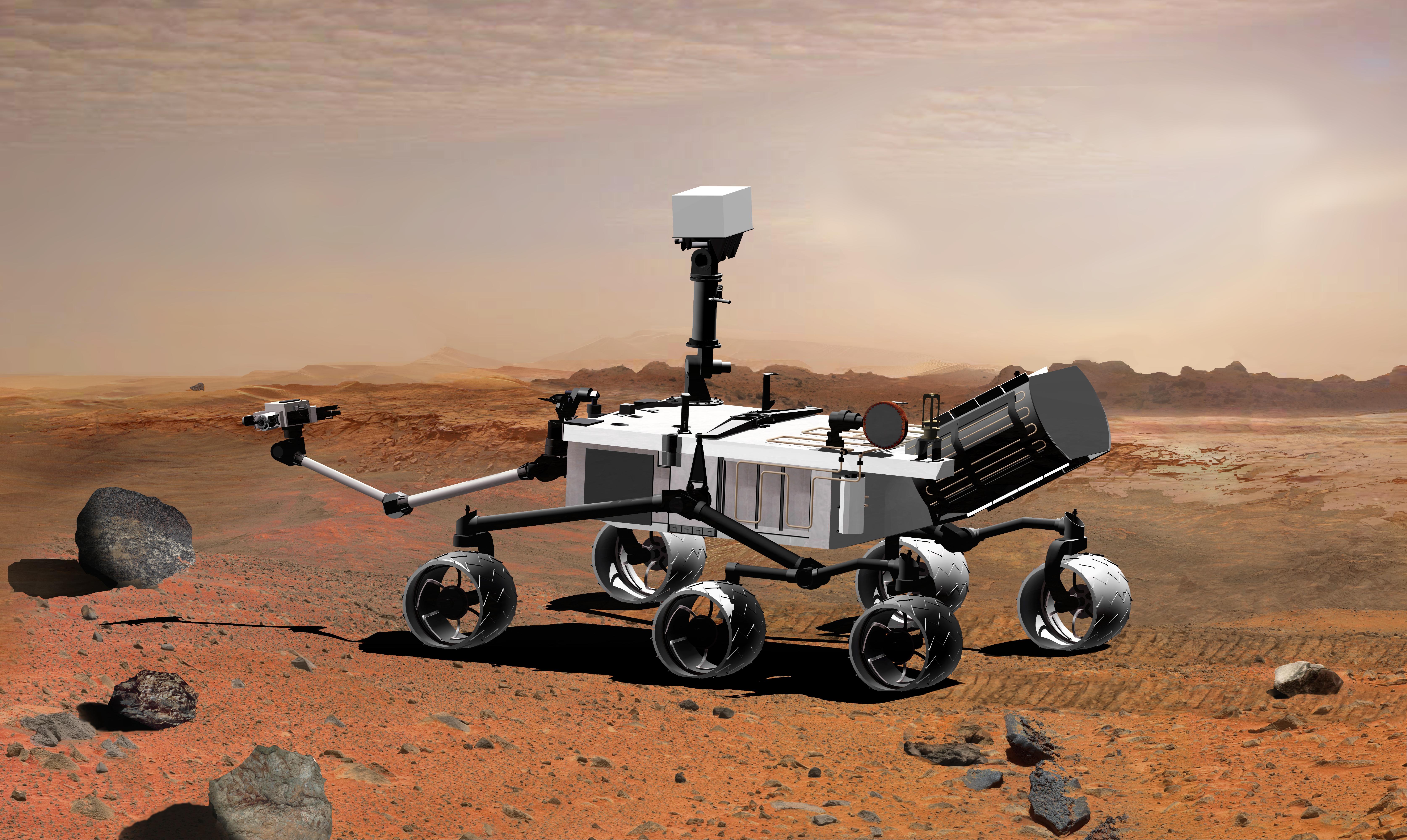
The Curiosity rover should be a Mars off-road champ.
Each of the rover's six wheels has an independent drive motor, with the two front and two rear wheels equipped with individual steering motors. This setup should give the rover good agility, allowing it to make 360-degree turns while standing in place.
The wheels are big, too. Each is 20 inches (51 centimeters) across — twice as wide as those on Spirit and Opportunity. The rover should therefore be able to roll over obstacles up to 30 inches (75 cm) high.
Curiosity Is Powered By Plutonium
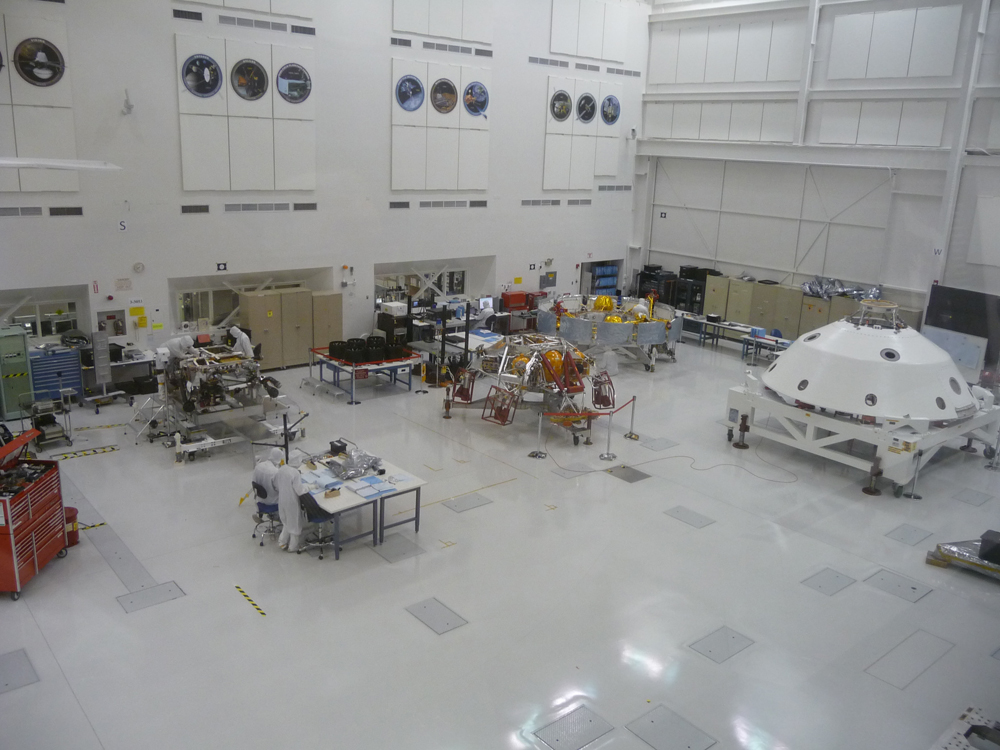
Previous Mars rovers have been solar-powered, limiting their exploration to sunny seasons and places.
Curiosity, on the other hand, will use a radioisotope power system that generates electricity from the heat emitted by plutonium's radioactive decay. This means that Curiosity will be able to roam, in darkness and in light, year-round.
Not since NASA's Viking landers launched in the 1970s has the space agency dropped a nuclear-powered probe on Mars.The rover has a primary mission that is expected to last an entire Martian year (687 Earth days), much longer than the planned 90-day missions of Spirit and Opportunity. The added power should allow the rover to drive longer and farther than any rover to date, mission managers have said.
Join our Space Forums to keep talking space on the latest missions, night sky and more! And if you have a news tip, correction or comment, let us know at: community@space.com.
Get the Space.com Newsletter
Breaking space news, the latest updates on rocket launches, skywatching events and more!

Space.com is the premier source of space exploration, innovation and astronomy news, chronicling (and celebrating) humanity's ongoing expansion across the final frontier. Originally founded in 1999, Space.com is, and always has been, the passion of writers and editors who are space fans and also trained journalists. Our current news team consists of Editor-in-Chief Tariq Malik; Editor Hanneke Weitering, Senior Space Writer Mike Wall; Senior Writer Meghan Bartels; Senior Writer Chelsea Gohd, Senior Writer Tereza Pultarova and Staff Writer Alexander Cox, focusing on e-commerce. Senior Producer Steve Spaleta oversees our space videos, with Diana Whitcroft as our Social Media Editor.
